Ever since it became known that Netflix’s ‘Squid Game‘ will be adapted into a reality TV format through ‘Squid Game: The Challenge,’ the world has been eager to know just how similar the two shows are. The spinoff certainly did not disappoint when it comes to its faithfulness to the original Korean show, though there are certain differences between the two shows that have also caught the attention of the world. Hence, it is easy to understand why one might be looking forward to comparing the two very ambitious projects.
The Prize Money
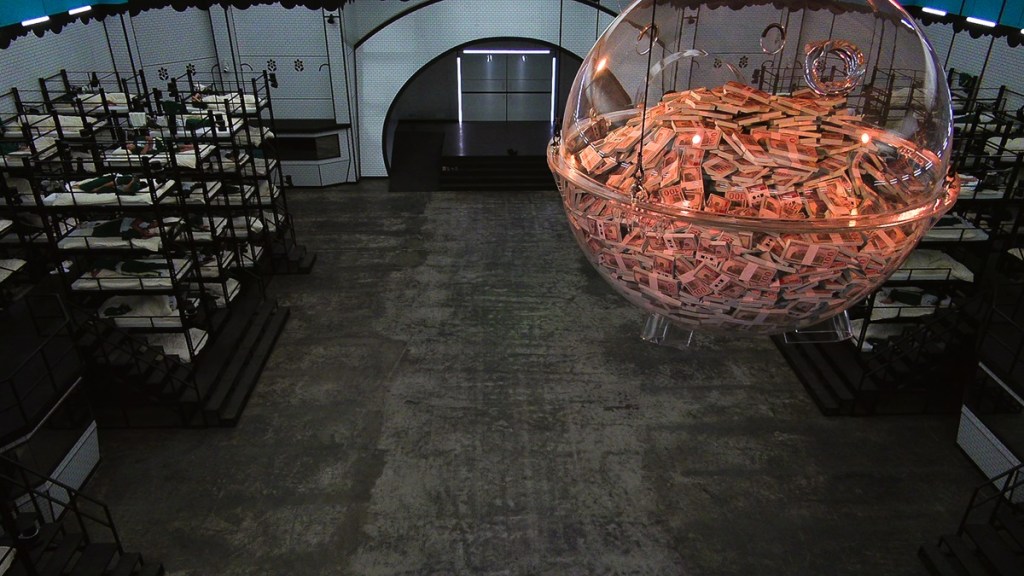
Let’s start off with the very thing that served as the primary motivator in both shows for the players to keep on going. Each contestant’s elimination added 100 million South Korean won to the final prize pot in the drama show, making the grand prize a total of 45.6 billion South Korean won, which is about $35 million as of writing. On the other hand, the reality show had each player’s elimination add $10,000, which resulted in a grand total prize of $4.56 million. Though the money seems less than its fictional counterpart, we must keep in mind that it is indeed real and perhaps one of the largest sums of money ever offered in the world of reality television.
Similar Costumes
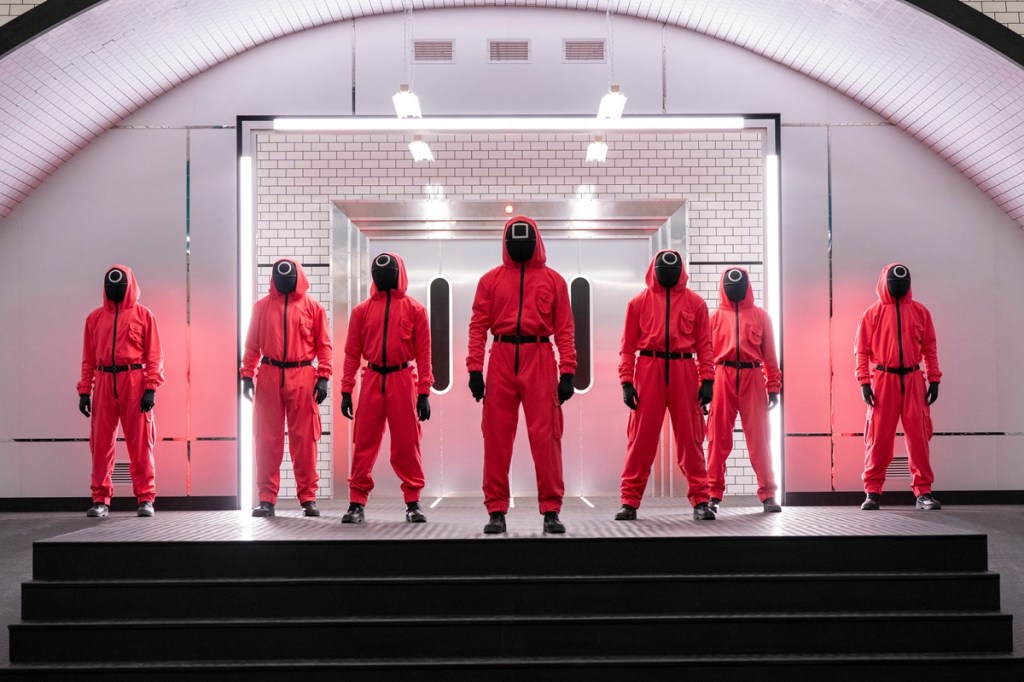
‘Squid Game: The Challenge’ pleasantly surprised many with just how similar the costumes worn by the contestants and the staff have been when compared to ‘Squid Game.’ All the players are seen wearing the recognizable green tracksuits with their respective numbers on them. Underneath their green jackets, they wear white shirts with their numbers printed in green, not unlike the characters from the drama show. Similarly, the staff members are seen in pink gear that covers them from head to toe, with their black face coverings bearing squares or circles.
The Color of “Blood”

While it might be obvious to many that there are no deaths in the reality TV show, that did not stop those behind the project from making good use of the shock value that comes from using gunshot sounds as an indication of elimination. Hence, all the players were made to wear squibs containing fake blood, which would go off should they be evicted. However, instead of using a red-colored liquid, the showrunners used a black liquid, primarily to not hurt anyone’s sentiments, especially those who have found themselves victims of weapon-induced violence. Even the pink-clad staff members do not carry any guns.
Red Light Green Light
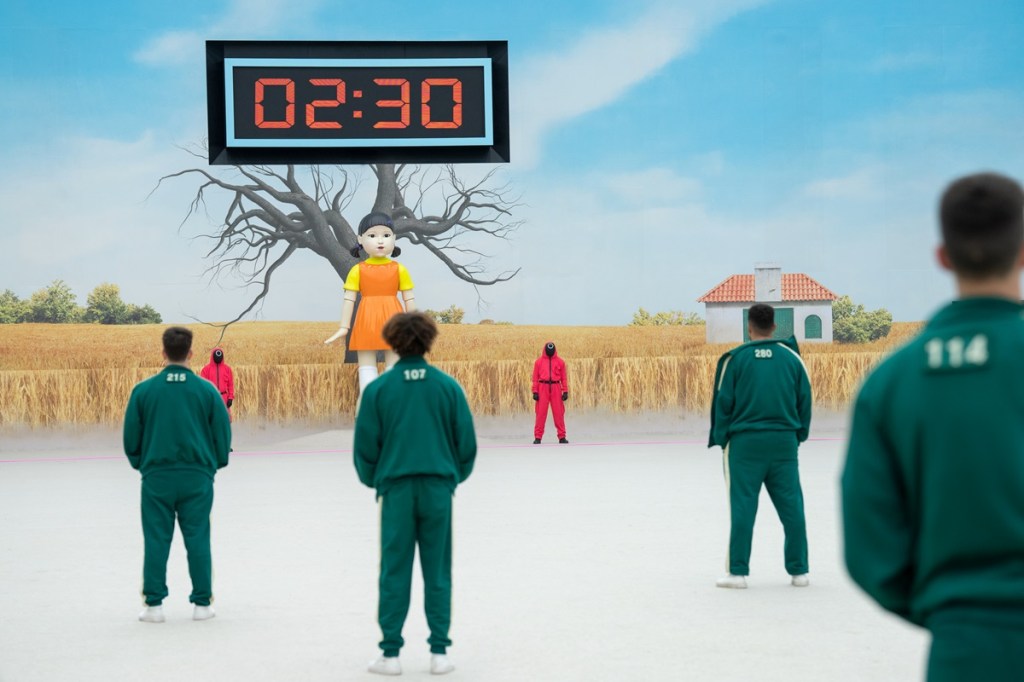
The very first game in both shows was the game of Red Light Green Light. The set used for the challenge in the reality show is quite similar to what we get to see in the drama series. With 5 minutes on the clock, the contestants have to travel from one end to the other, all the while avoiding any motion detection from the giant mechanical doll who can turn her head a complete 180 degrees in order to pause and resume the game.
Dalgona Game
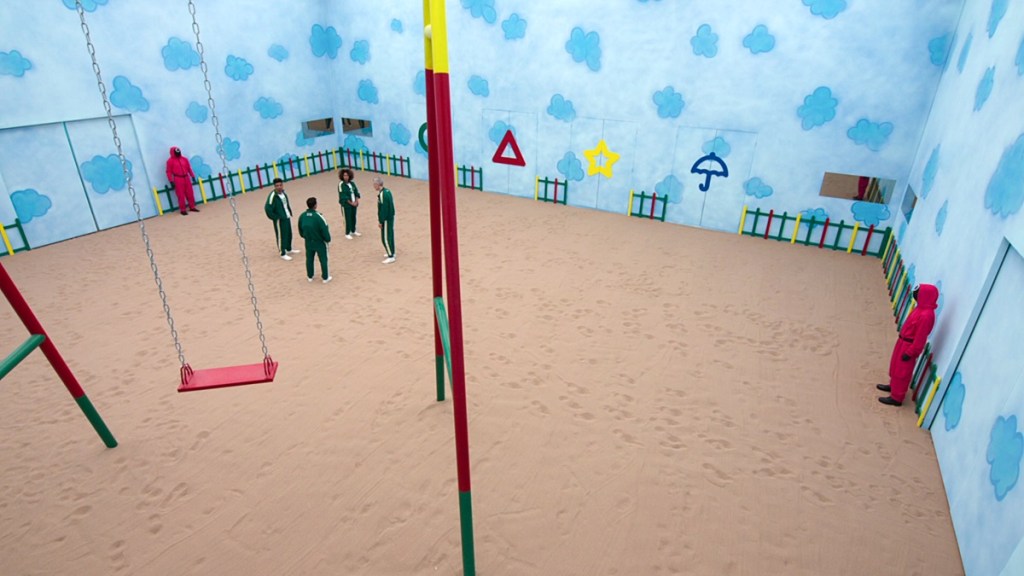
In essence, the game remained the same, but there is indeed one additional element in the reality show that perhaps makes it even more brutal. Since almost everyone in the spinoff is aware of how the game works and which shape to avoid (the Umbrella), the showrunners preemptively asked the contestants in season 1 to form four lines. The people at the front of each line were taken into the playground-like area where they had to mutually decide on a shape for each team.
Given everyone’s obvious reluctance to avoid the hardest of the four shapes, many contestants were eliminated before they even had the chance to touch a Dalgona cookie. Hence, there was an obvious undercurrent of anger amongst those who did get the umbrella towards the person who made the choice. While everyone, irrespective of their shape, had to complete the task alongside each other in the Korean series, the reality show made it so that the challenge was conducted in batches, with players of one shape conducting the task only alongside each other.
Voting
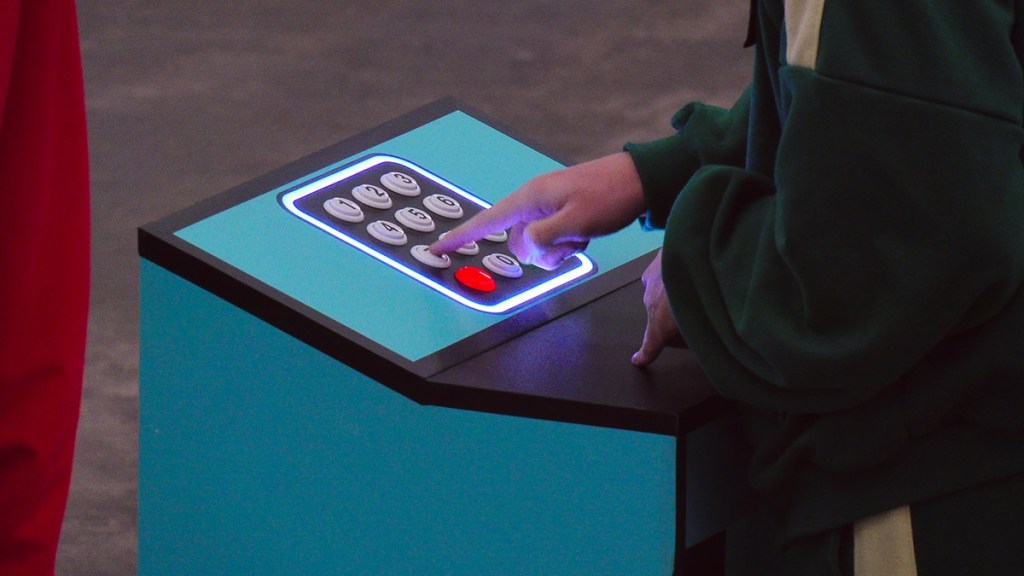
Both the drama show and season 1 of ‘Squid Game: The Challenge’ did have a voting, though its purpose was very different. In ‘Squid Game,’ the contestants voted to potentially stop the fatal game while the reality TV stars had to vote to eliminate three of their fellow players. Despite the different outcomes, the concept of players voting did make it into both shows.
The Dormitory Games
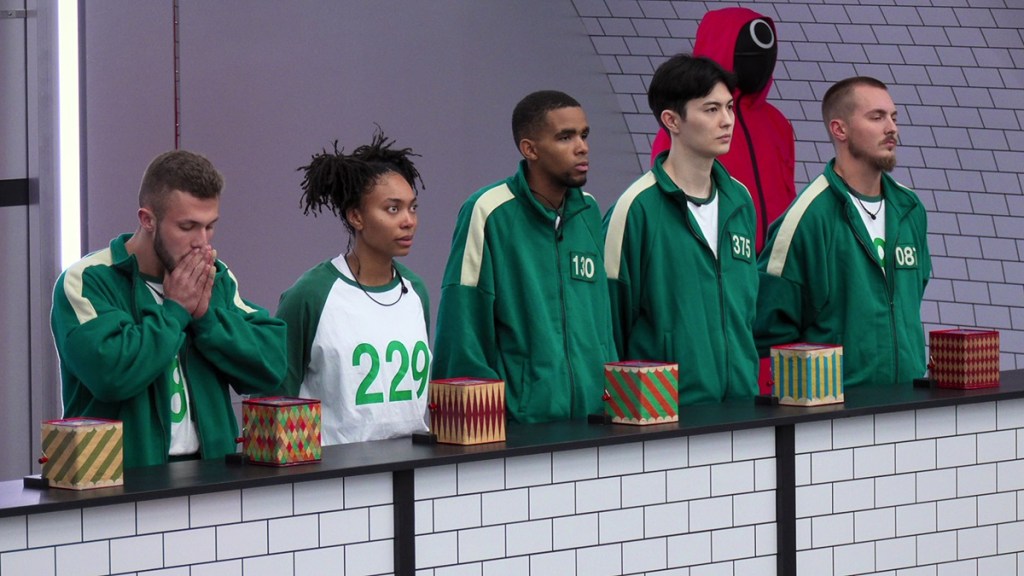
In ‘Squid Game,’ the dormitory was primarily the place where the players made alliances and later started to kill each other after realizing that the latter would not result in their elimination. While the first aspect did remain in the reality show, the second element was an obvious no. Instead, the showrunners introduced various small tasks that took place in the dormitory and the surrounding areas to invoke the same sense of nervousness that the characters from the original show felt. From tantalizing telephone calls to powerful jack-in-the-boxes, the showrunners maintained the theme of childhood enjoyment methods being converted into tools of elimination.
The Absence of Tug of War
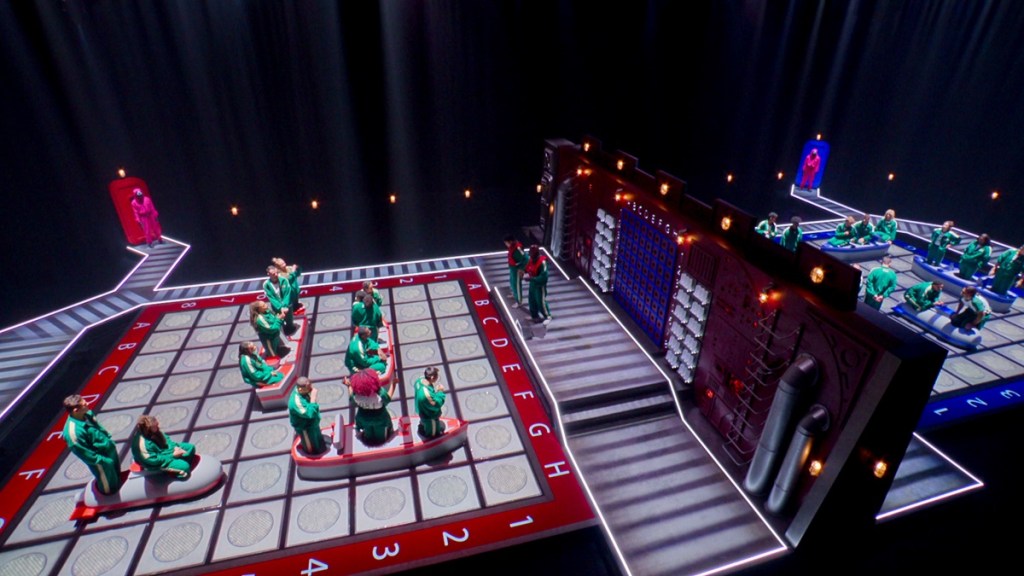
Perhaps one of the most stark differences between the two shows, the replacement of Tug of War with Warships surprised many viewers and players. While the reasons behind the swap were likely to not make the competition about physical strength, the change still remained noticeable and led to some very unexpected events in season 1 of the reality show. After all, the two games are night and day and require very different types of skills in order to cement one’s victory
Pairing for Marbles
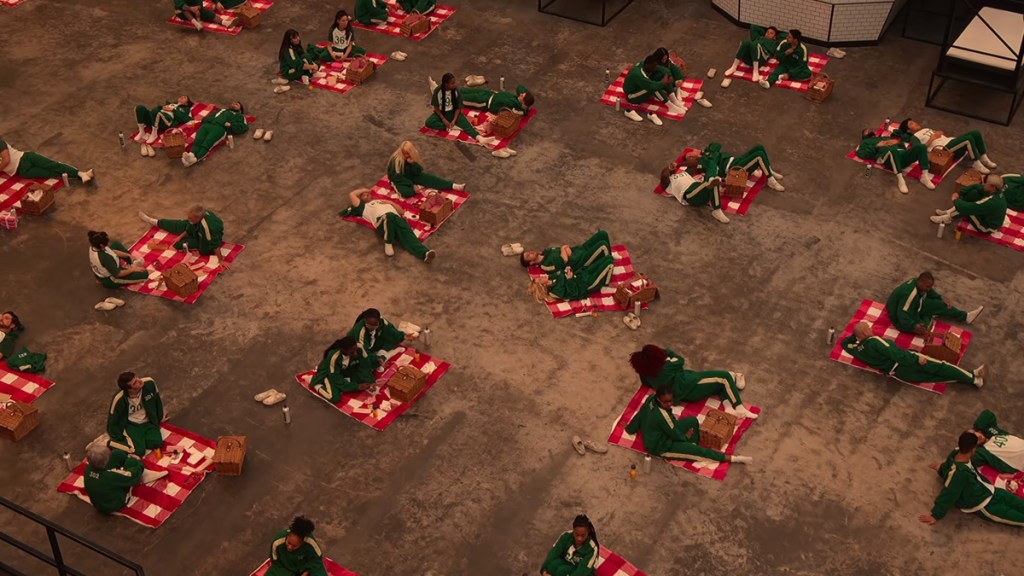
Surprisingly, the reality show makers were able to surprise the players in season 1 when it came to pairing up for the game of Marbles. While the characters in ‘Squid Game’ chose their partners, not knowing anything about what might be next, the contestants from the spinoff certainly were more than aware of the possibility. Hence, they were made to pair up with their dearest ally under the pretense of a picnic. When the contestants discovered marbles at the bottom of their basket, it became obvious how a completely new tactic was used by the showrunners to recreate the sense of doom from the original show.
A Game of Dakji
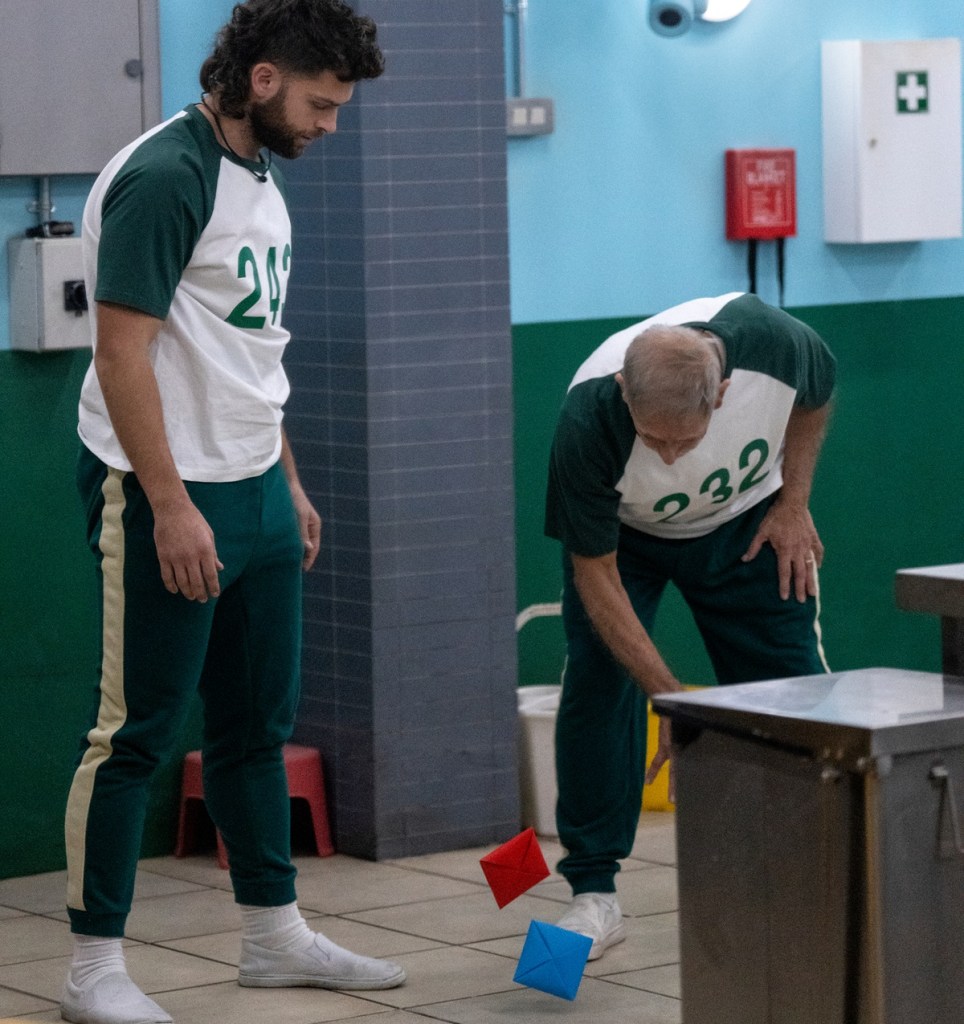
In the Korean series, the players are inducted into the fatal competition through a game of Dakji. However, the same process could certainly not be replicated for the reality show. Instead, season 1 presented us with the iconic scene of Rick Mercurio (Player 232) playing the card-flipping game with Stephen Lomas (Player 243) in the kitchen, though the only consequence of the same was the victor winning a bar of chocolate.
The Chores
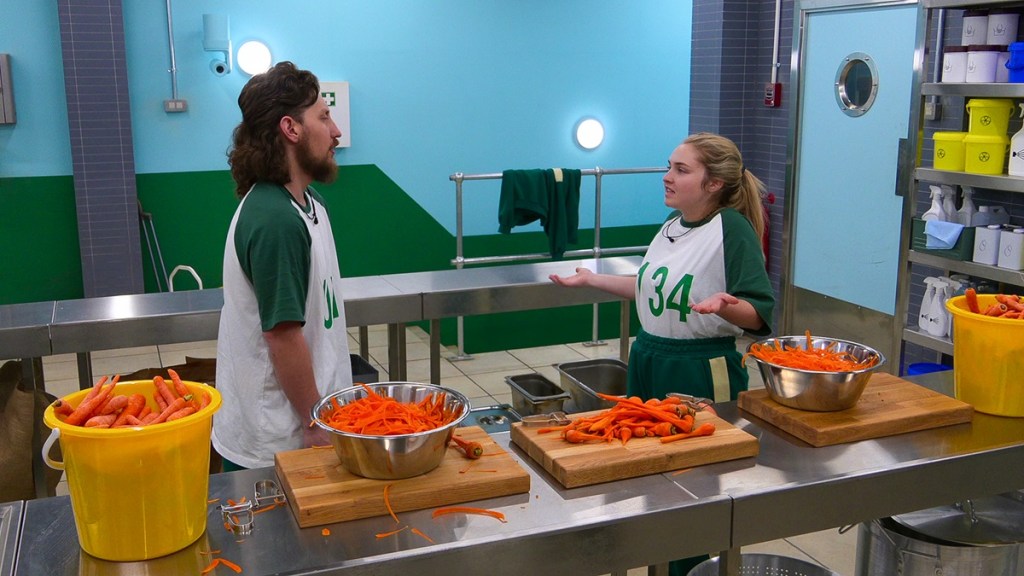
While the characters in ‘Squid Game’ did not have to do any chores, the same cannot be said for the reality TV players. Over the course of season 1, we get to see them engaging in various types of tasks, like peeling carrots and juicing oranges. Given the less-than-fatal consequences of the spinoff, the showmakers likely added the element to make the show more engaging, as it often provided the contestants with a variety of opportunities.
The Glass Bridge Sequence Decider

Given that the contestants of the reality show are well aware of which games might come their way, the showrunners had to get a bit creative when the time came for the players to decide the sequence for the game of Glass Bridge. Instead of simply allowing them to choose, though, the competitors were asked to dig out a teddy bear from a claw machine and give the number attached to it to a player of their choosing. Not only did this add a new element to the competition, but it also created discord between the players, which, given what was to come next, certainly amped up the stakes.
Thinning the Herd

Despite the numerous extra tasks that were added to the reality show, the elimination rate of ‘Squid Game: The Challenge’ season 1 was nowhere near its fictional counterpart. From the challenge that decided the Top 20 contestants to the highly luck-based game of dice, many small and big tasks were undertaken in order to remove more and more players from the show. This not only kept the suspense alive but also kept the contestants on their toes at all times, especially when deciding on their allies.
Circle of Trust
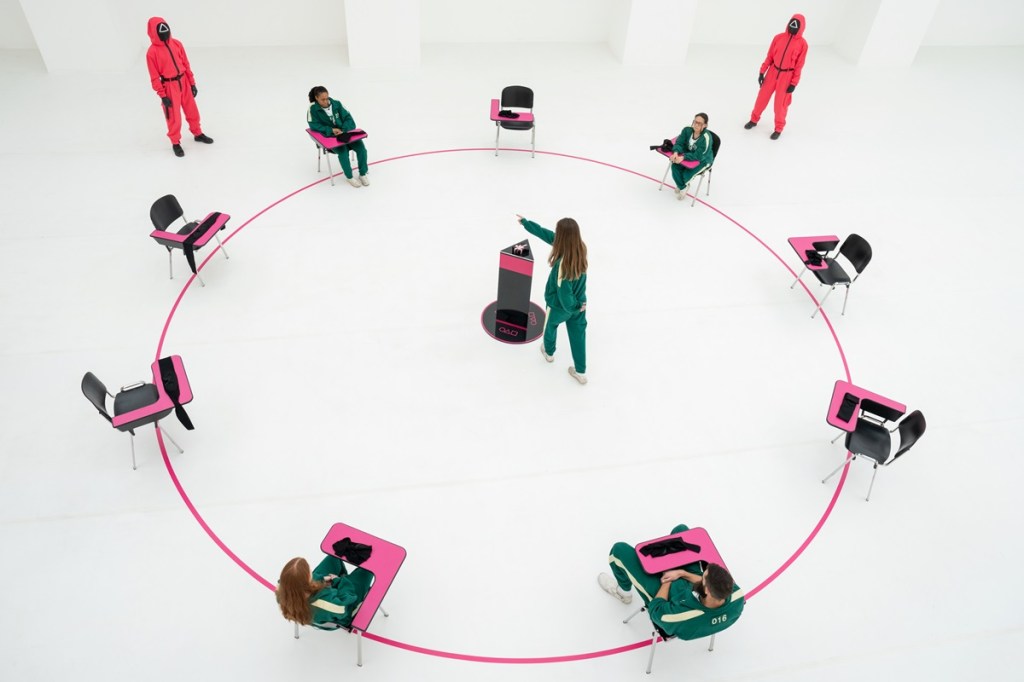
Unlike ‘Squid Game,’ there were plenty of people left before the final three in the reality series. Hence, a new game was added after Marbles called Circle of Trust. As a part of the challenge, the players each had to sit blindfolded in a circle. One of the players was tapped on the shoulder each round and they then had to remove their blindfold to take the black package in the center and place it in front of someone else. After the tapped player resumed their position in the circle, everyone removed their blindfolds. The person with the package had one chance to either correctly guess who placed the package in front of them in order to eliminate them or get eliminated themselves.
From Top 3 to Final 2

Given the obvious lack of fatal measures in the reality show, a new method was decided to eliminate someone from the last three contestants. During a lavish dinner, the players were presented with three buttons. On pressing a button, it had the possibility of turning into three colors. A green button would mean that the player who pressed it would get the option of choosing who will join them in the final two. A red button signified a direct elimination, while a grey one had no consequences. This was the method chosen in season 1 to finalize who would be the final two players.
The Last Game

For the final game, the two finalists did not have to play the iconic Squid Game, which is the namesake of the whole franchise. Instead, the contestants had to play multiple rounds of Rock Paper Scissors. The winner of each round had the chance to choose one key from a box containing multiple of them. They could then use the key to try and unlock the safe containing the prize money-bearing card. If the key worked, the player who opened the safe was declared the winner. Otherwise, the game of Rock Paper Scissors continued.
Read More: Do Contestants Get Paid to be on Squid Game The Challenge?


You must be logged in to post a comment.